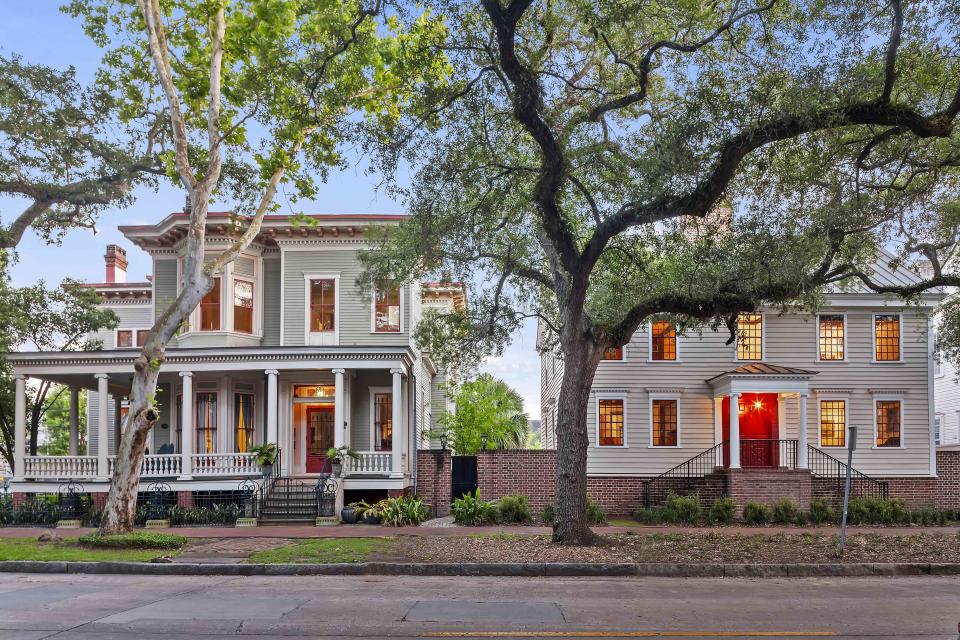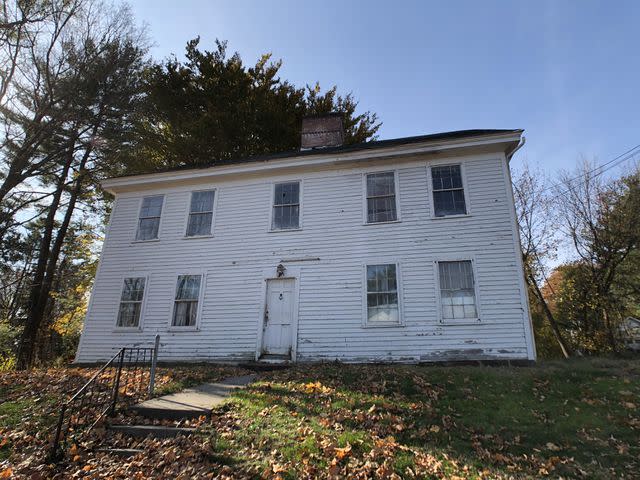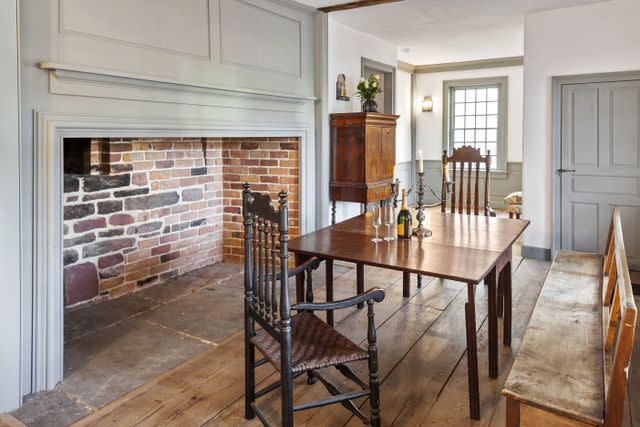The Common Mistake To Avoid When Restoring A Historic Home, According To An Expert
Pete Galloway, owner of Savannah’s new Printmaker’s Inn, shares the number one pitfall historic homeowners often fall into.

John McManus
Savannah’s new Printmaker’s Inn sits just a few blocks west of the city’s famed Forsyth Park and is comprised of not one but two museum-quality homes, each painstakingly restored by owner Pete Galloway, his wife Kristen, and their dedicated team of craftspeople and contractors.
“I was always interested in old houses and preservation,” Galloway says. After graduating college, an uninspiring job in healthcare left him searching for more. When the Nichols House, a gorgeous but aging 19th century Italianate Victorian manor and the adjacent lot, went for sale in 2015, he and his wife jumped headlong into the project. The learning curve was steep, but Galloway immersed himself in research, poring over architecture books and peering over the shoulders of his crew. Slowly, the couple turned the home’s four apartments into suites, refreshing the paint, restoring architectural details like the original crown molding, ceiling medallions, and heart pine floors, and refurnishing rooms with period antiques they scooped up both locally and online, including auction sites like Live Auctioneers, Bid Square, and Invaluable.
Meet Our Expert
Pete Galloway is the founder of Peter Galloway Historic Preservation in Savannah, Georgia

John McManus
The Bellingham Suite in The Hills Galloway HouseBut Galloway admits his real education began with the empty lot next door and a partnership with Bill Gould, a New England-based preservationist with more than 50 years of experience relocating historic properties that no one else wants, exactly the kind of place Galloway hoped to find for his vacant lot. “I reached out to him for six months,” he says. “Finally, he got back to me because I think he knew we were serious.” When they struck out in the South, they headed north to Connecticut, eventually purchasing the Hills House, a neglected Georgian home built in 1693 on the banks of the Connecticut River. They closed on the property in 2019 and began the arduous process of dismantling and reassembling the 326-year-old home. Last year, after four years of careful renovations, the Galloways opened the new/old Hills-Galloway House, where guests are treated to refreshed pine floors, reconstructed antique windows with the original 18th century glass, spectacular woodwork, and traditional plasterwork finished with a lime wash or period-appropriate linseed oil paint.

John McManus
The Hills HouseThe #1 Biggest Mistake You Can Make
We asked Galloway, who recently launched his own company, Galloway Preservation Design, what he considers the biggest mistake old house aficionados can fall into and how to avoid it. His answer?
Rushing the process.
Advice On Taking On a Restoration Project
Do Your Research
“The restoration process is a slow one,” Galloway says. “If you don’t have the time, care, and wherewithal to do it right, you’re set up for failure.” Getting it right starts with doing your homework, he says. Research everything—vernacular architecture, traditional construction methods and materials, period finishes, classic millwork, and even the regional history and local customs. When the time came to disassemble the Hills House, Galloway went so far as to engage an anthropologist to help chronicle any artifacts the move uncovered. They found old shoes hidden in the walls—the practice was once thought to bring the homeowners luck and ward off evil spirits—and there was a family Bible tucked in there, too. They also turned up an antique coin that dates to the 1740s. But the most thrilling discovery was an 18th-century drawing of a battle scene. “The man who expanded the house in the 1740s fought in the French and Indian War, so we [are] thinking the drawing is his.” It’s now framed and hangs inside the Hills House.
"The restoration process is a slow one. If you don’t have the time, care, and wherewithal to do it right, you’re set up for failure."
Seek Out The Right People
Not everyone needs to hire an anthropologist, Galloway admits, but you should make time to find the right people—true experts at their craft. “It might take a while to find them, but the results will be worth the wait,” says Galloway, who says it took him several attempts to get the right team in place. Eventually, things started clicking when he met Bill Gould. The New England preservationist was generous with both his time and expertise, helping Galloway with everything from reassembling the home’s stunningly well-preserved mortise-and-tenon timber frame to using traditional methods to hand-craft new mahogany window frames based on period patterns before reinstalling the original 18th-century glass. “People are always so gung-ho to replace old windows with new ones, which are so often vinyl,” Galloway says. “They may be a little more efficient, but you’ll have to replace them every 20 years when 99% of the time the old wooden ones can be restored. They’ll be good as new, but they’ll last another hundred-plus years.” There’s a magic quality to the light that filters through that old glass. “It’s part of what makes old houses so cool.”
Related: 7 Secrets Everyone Should Know Before Renovating An Older Home
Give Yourself Plenty Of Time
As with his approach to windows, Galloway recommends taking the slow route on other architectural features because traditional craftsmanship matters, especially regarding things like plaster walls, he says. Of course, it can be hard to resist the temptation to rip out damaged plaster walls when drywall is so much cheaper and makes things like plumbing and electrical easier to manage. “But plaster really gives you that historic feel,” he says. “There’s no comparison.” While restoring the Hills House, Galloway worked with the British-born plasterer Henry Orton to reinstall thousands of individual pieces of hand-split lath, dating back to the home’s 1740s expansion, and apply new plaster atop them using old-school methods. There are eco-friendly pluses to plaster, too, including the walls’ longevity as well as their ability to resist mold when used with milk paint, linseed oil paint, or a simple lime wash.

John McManus
The Inn's keeping roomAt the end of the day, though, Galloway says: “Don’t be afraid to make mistakes. You’re going to make them. Learning by doing is part of the fun.”
For more Southern Living news, make sure to sign up for our newsletter!
Read the original article on Southern Living.

